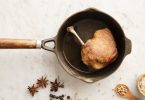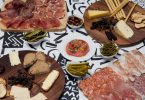Korean Tea Ceremony or Darye, a tradition that spans over a thousand years has been enjoying renewed popularity.
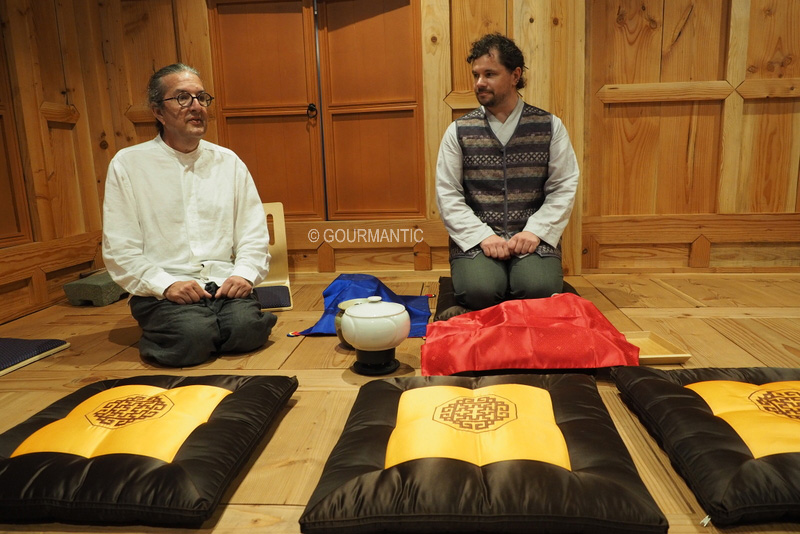
L-R: Stephen Carroll, Owen Terry
The Korean Cultural Centre hosted educational tea ceremony sessions presented by Stephen Carroll and Owen Terry of The Tea Guild of Australia. Darye, or Korean Tea Ceremony came back into Korean culture after the war in the 1950s with several tea schools teaching the traditional art of the tea ceremony. While there are very little difference between tea schools, differences exist between men and women and how they perform the ceremony. Here’s what you need to know about the art of the Korean Tea Ceremony.
All You Need to Know about Korean Tea Ceremony
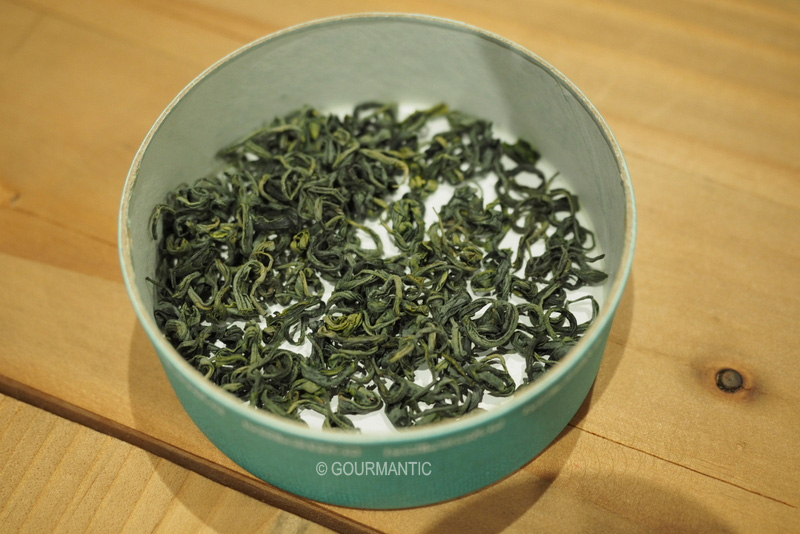
1. Korean green tea comes in three grades: Ujeon (first pick & highest grade, pre rain), Sejak (second pick, post rain), Joongjak (third pick). Puruncha is an oxidised style of tea which has a longer shelf life.
2. There are three main Korean tea ceremonies styles. The Royal Darye is attended by the king, is 8 hours in duration and ends with only the king being served the tea which he doesn’t drink it in case it is poisoned. The Seonbi Darye ceremony is for Korean Confucian Scholars, usually a ceremony for men but open to both genders. Both Darye are conducted in silence. The Friends Darye tea ceremony is much like a western afternoon tea in that it’s more relaxed and people can chat. There are also tea ceremonies for two persons.
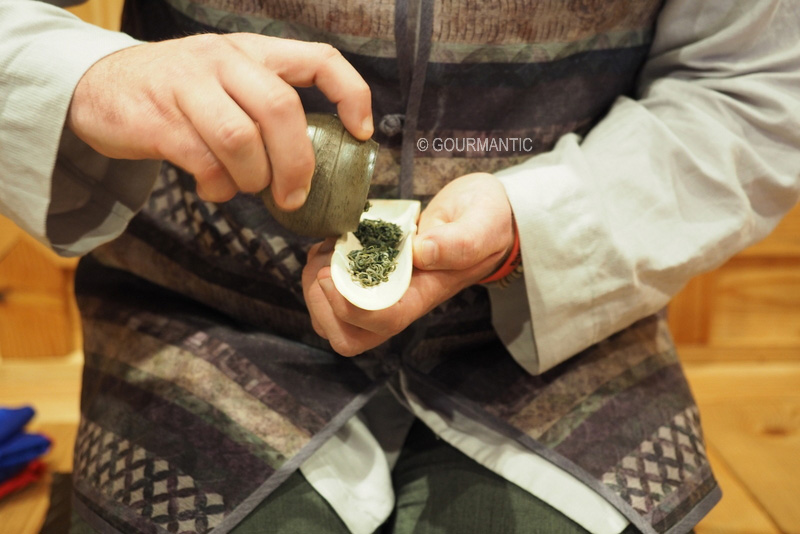
3. The first cushion to the right (facing the tea server) is reserved to the eldest person or the most important guest.
4. The ceremony begins with a large bow but without bending the head. A slow movement of the arm to show his robe denotes he’s a scholar. Ladies put their right hand on top of the left hand and place both on the right hip.
5. Two “tables” are set, each covered with a satin cloth. The red cloth covers the tea set and denotes earth. The blue satin cloth that covers the water reflects the sky. The yellow colour in between represents people, living between heaven and the earth. The tea is prepared from the red covered tray as it comes from earth. Water comes from the heavens and therefore it belongs on the blue-covered tray.
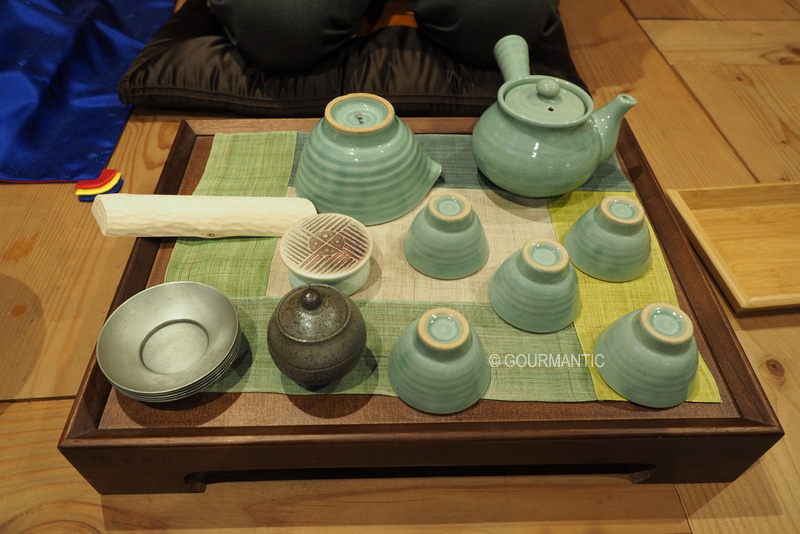
6. The red cloth is lifted revealing 5 cups – always an odd number – the tea, a bowl, a tea pot and metal cup holders. The bottom left hand cup (facing the tea server) is turned over. This is the tea cup that will be served to the esteemed guest. The bowl has a function to cool the water since traditionally green tea requires brewing at 70-80C.
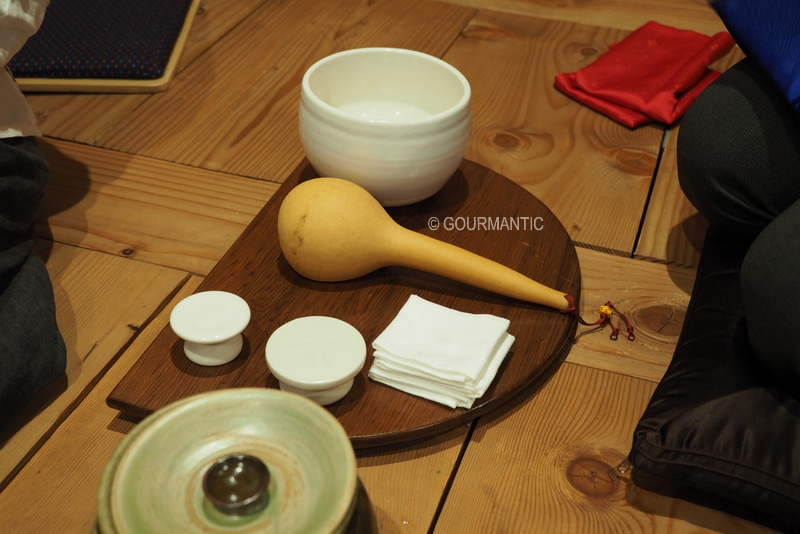
7. On the heaven tray, there are two stands for the hot water and cold water vessels. The three cleaning cloths are there for effect, not for cleaning as it’s a men’s ceremony and men do not any cleaning.
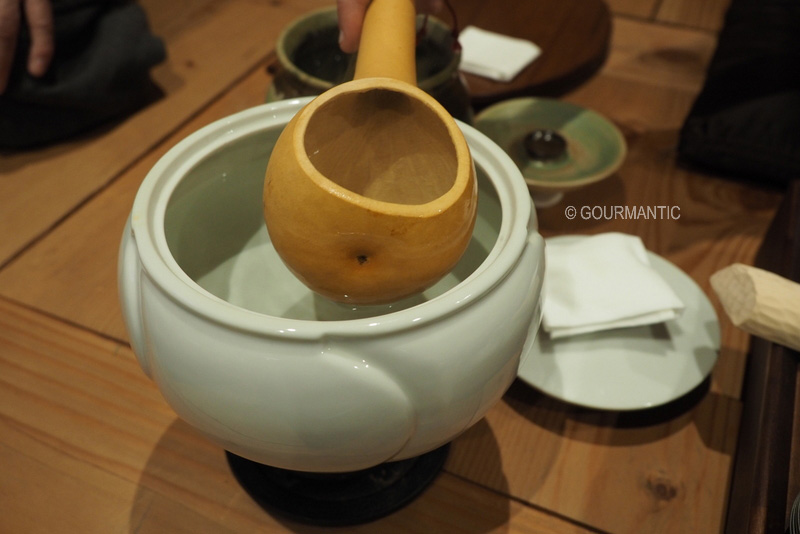
8. A traditional gourd ladle is used to transfer hot water to the bowl using a gentle stirring motion which ensures it doesn’t drip.
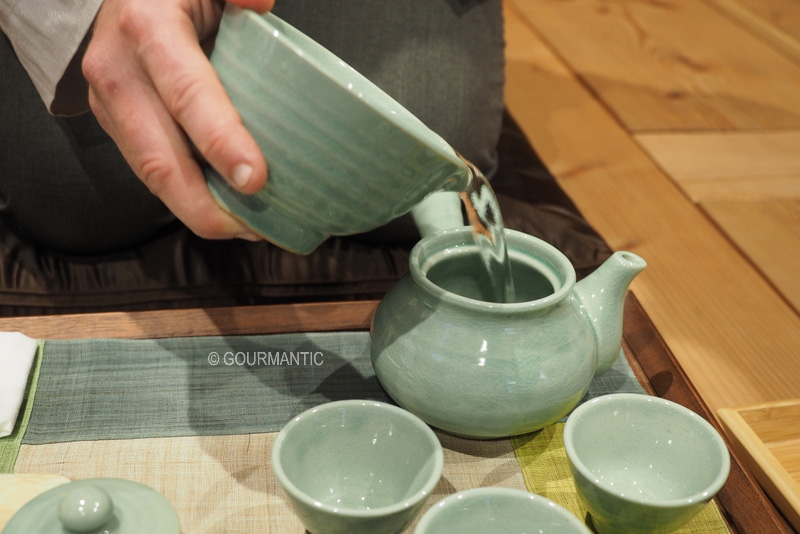
9. Water placed into the tea pot for a cursory cleaning then discarded. The tea is then added and topped with hot water.
10. The bottom left cup (facing the tea server) is for the esteemed guest while the number 5 cup is for the tea server who always tastes the tea to ensure it’s a good brew.
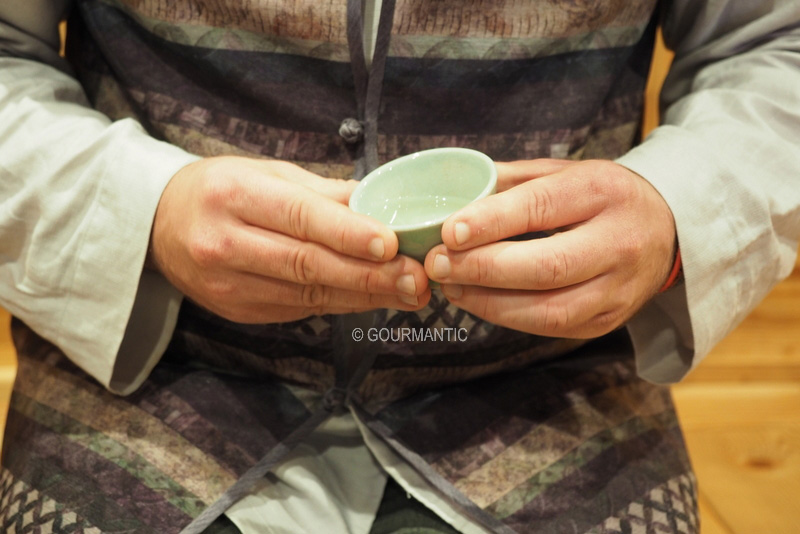
11. The cups are cleaned with hot water using a rocking motion to get around the edges then discarded. As a nod to cleaning, the lip of the cups is touched on the cloth.
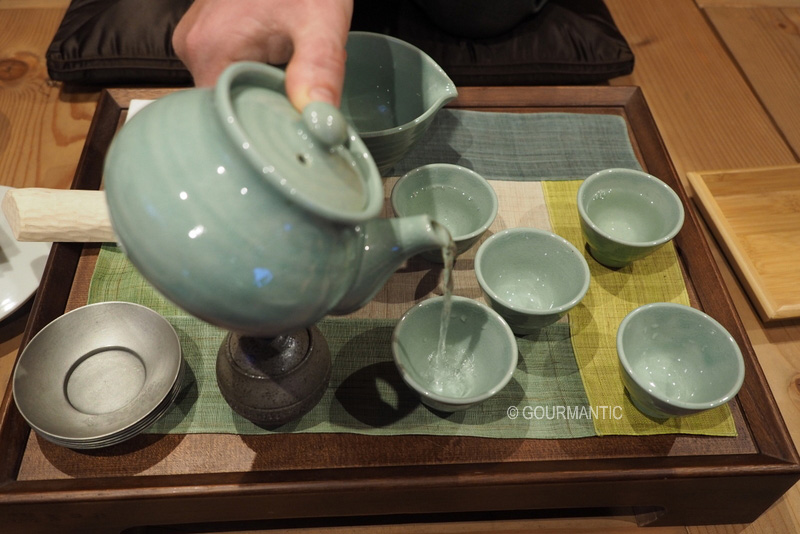
12. The tea goes around in half measures then topped, starting weak and getting stronger in flavour.
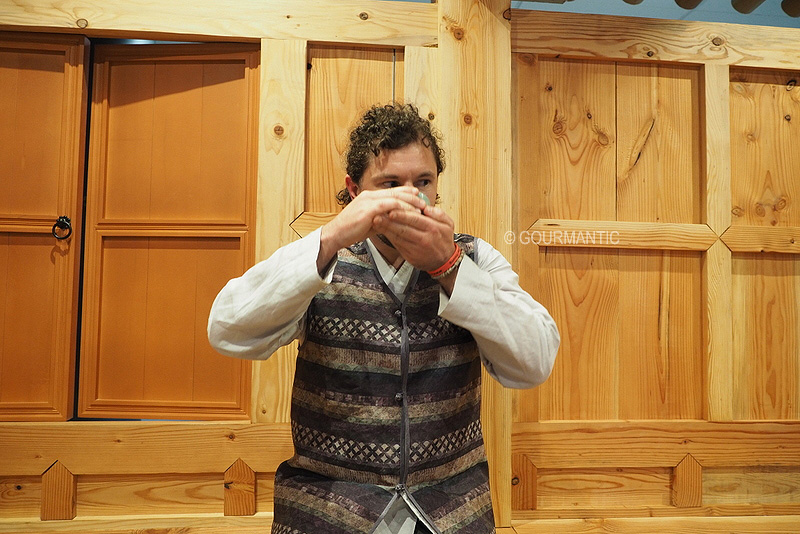
13. Men hold the cup in their palm with the metal tray flat on the other hand. Women hold the cup in a manner that hides their mouths when drinking (as demonstrated in the photo above).
14. The server continues to make and serve tea until the esteemed guest indicates they have had sufficient tea.
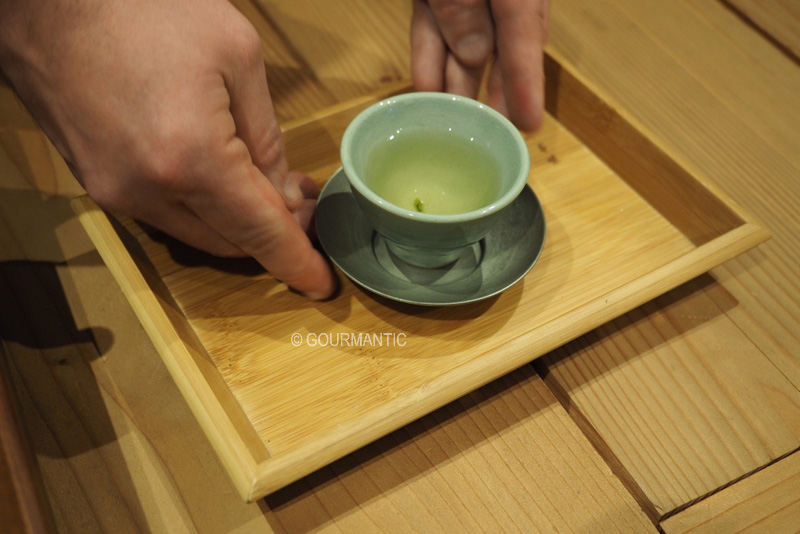
15. A tea leaf in the cup is a sign of good luck.
Below are more photos taken at the tea ceremony including a musical performance of gayageum, a Korean traditional string instrument.
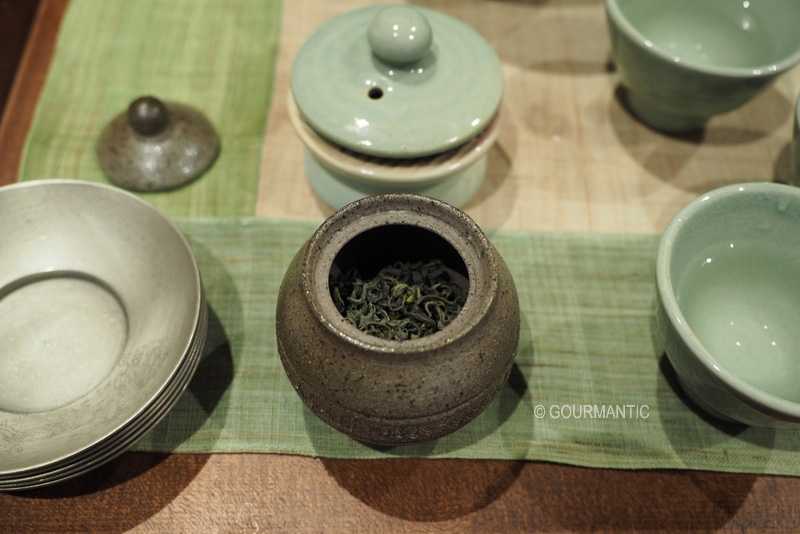
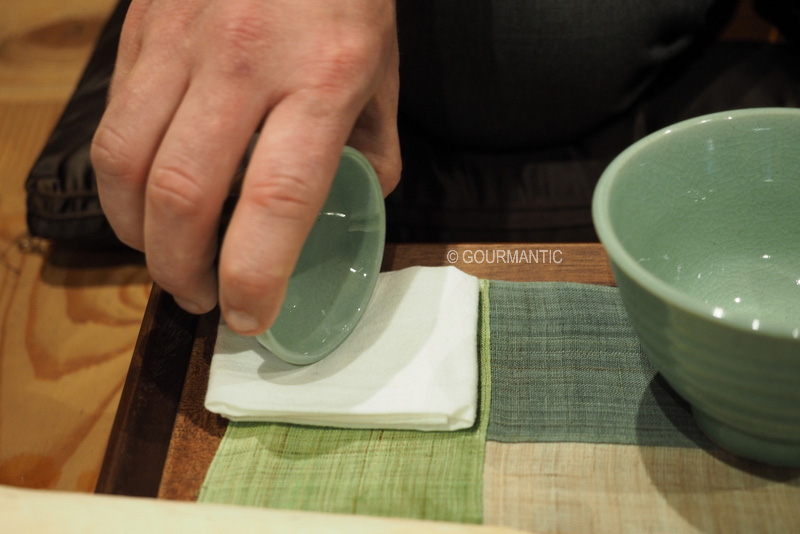
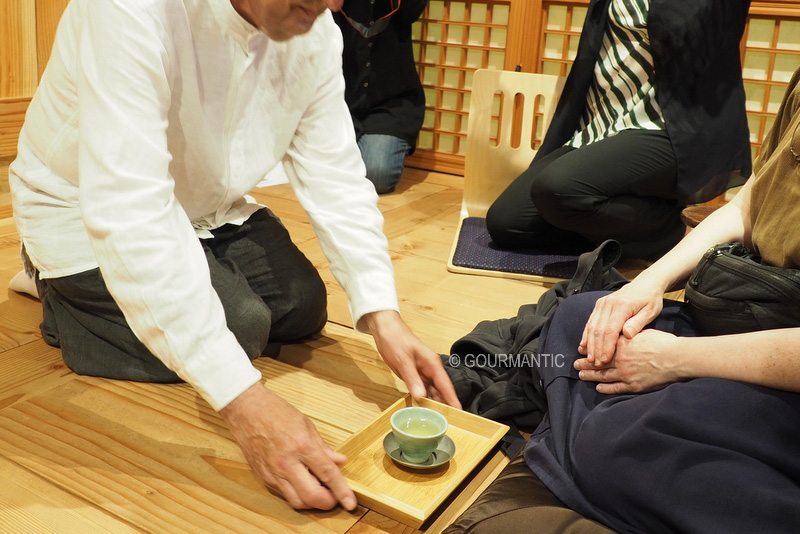
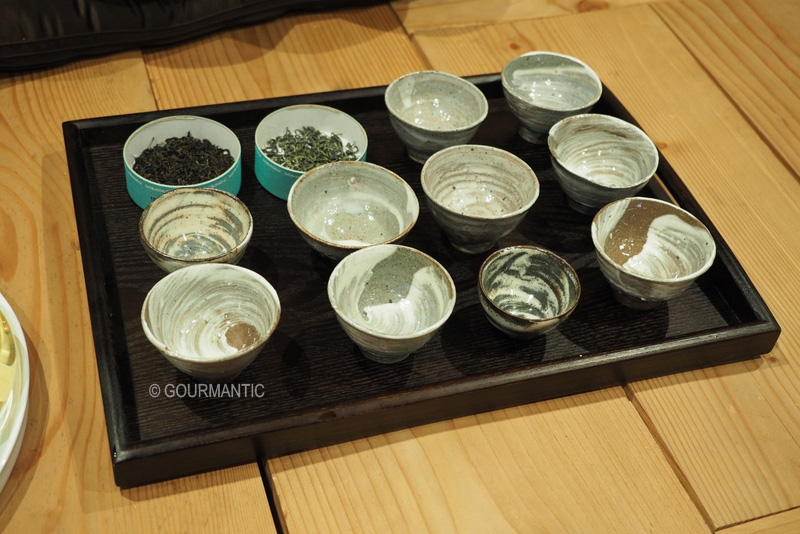
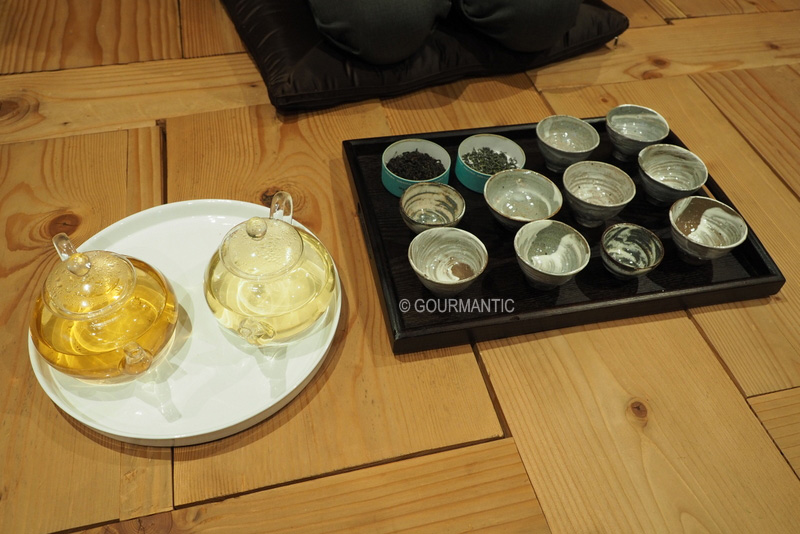
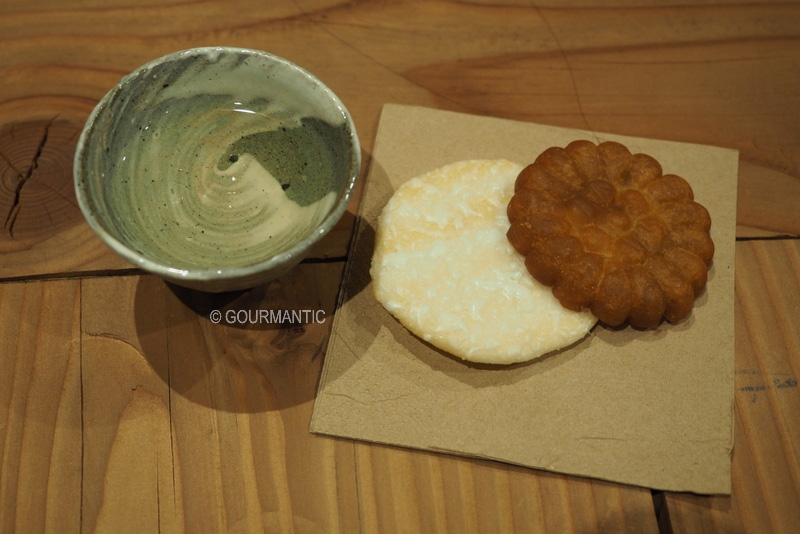
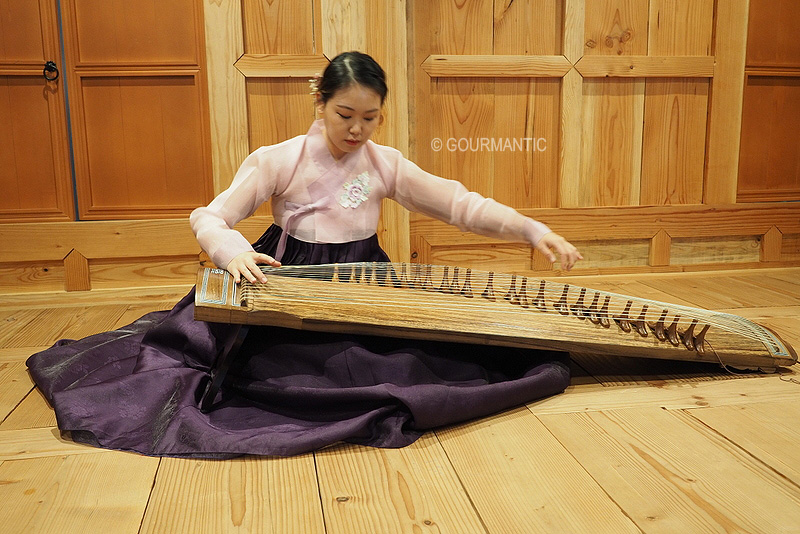
The Korean Cultural Centre offers a variety of cultural programs which include education programs with cultural classes and events for the general public. These include art exhibitions, film screenings, culinary events and numerous performances for anyone who is interested in Korean culture. More information from their website here.


